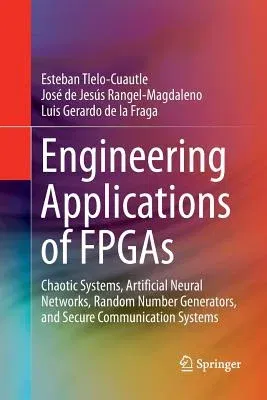Esteban Tlelo-Cuautle
(Author)Engineering Applications of FPGAs: Chaotic Systems, Artificial Neural Networks, Random Number Generators, and Secure Communication Systems (SoftcoverPaperback - Softcover Reprint of the Original 1st 2016, 30 May 2018

Qty
1
Turbo
Ships in 2 - 3 days
In Stock
Free Delivery
Cash on Delivery
15 Days
Free Returns
Secure Checkout

Print Length
222 pages
Language
English
Publisher
Springer
Date Published
30 May 2018
ISBN-10
3319816799
ISBN-13
9783319816791
Description
Product Details
Book Edition:
Softcover Reprint of the Original 1st 2016
Book Format:
Paperback
Country of Origin:
NL
Date Published:
30 May 2018
Dimensions:
23.39 x
15.6 x
1.3 cm
ISBN-10:
3319816799
ISBN-13:
9783319816791
Language:
English
Location:
Cham
Pages:
222
Publisher:
Weight:
340.19 gm